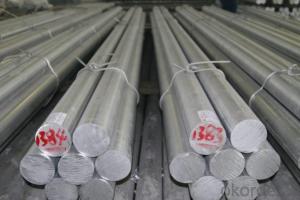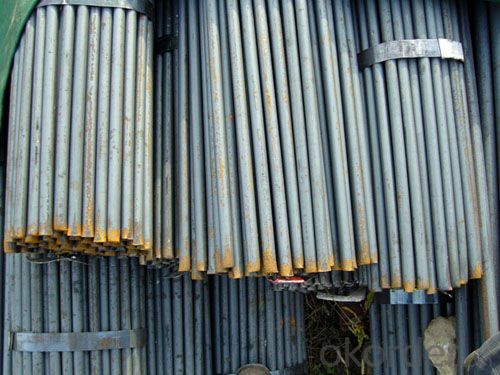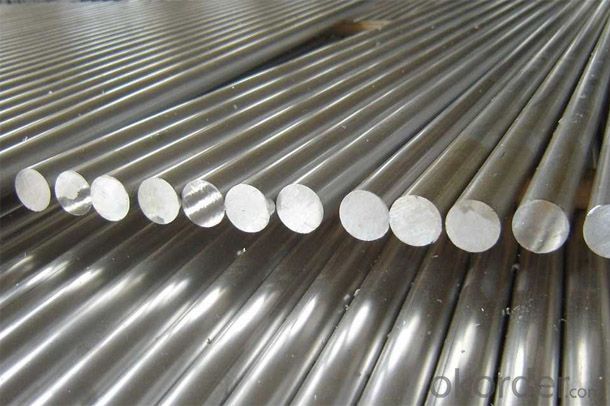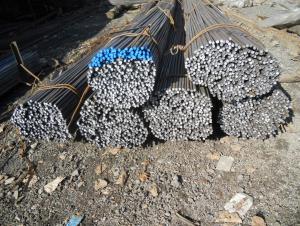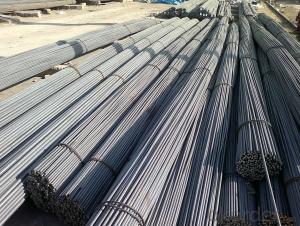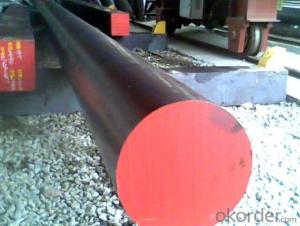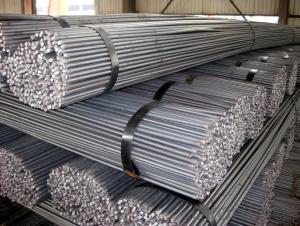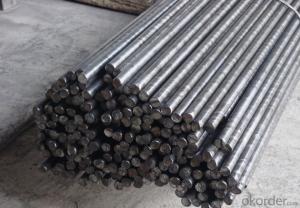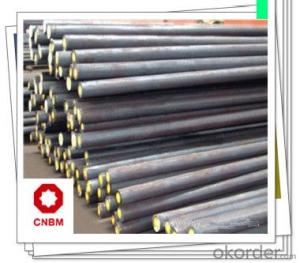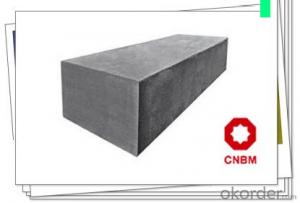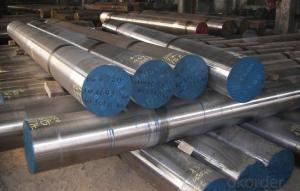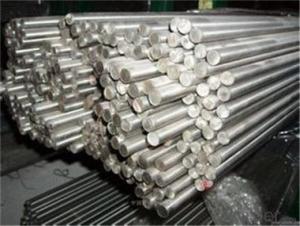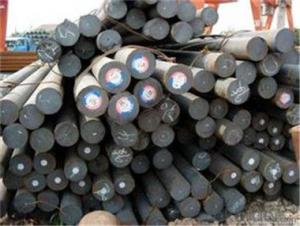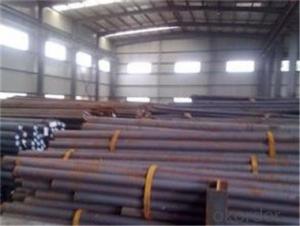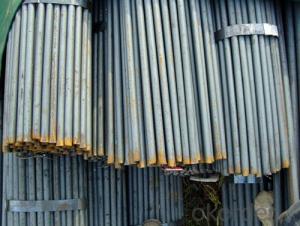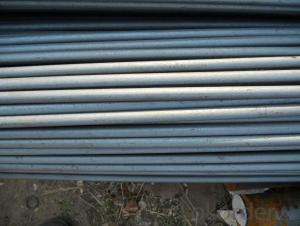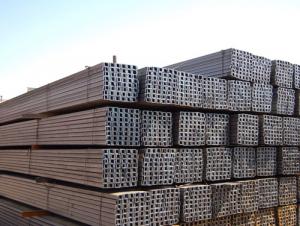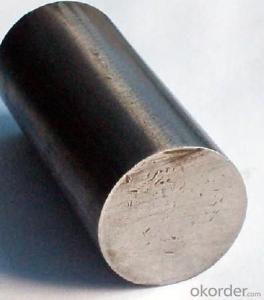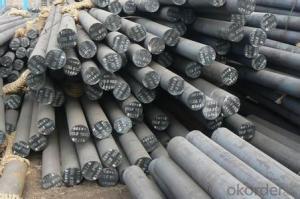Hot Rolled Steel Round Bar SGS Certificate Lower Price SAE 1018
- Loading Port:
- Tianjin
- Payment Terms:
- TT or LC
- Min Order Qty:
- 30 m.t.
- Supply Capability:
- 27000 m.t./month
OKorder Service Pledge
OKorder Financial Service
You Might Also Like
Product Description:
OKorder is offering Hot Rolled Steel Round Bar SGS Certificate Lower Price SAE 1018 at great prices with worldwide shipping. Our supplier is a world-class manufacturer of steel, with our products utilized the world over. OKorder annually supplies products to European, North American and Asian markets. We provide quotations within 24 hours of receiving an inquiry and guarantee competitive prices.
Product Applications:
Hot Rolled Steel Round Bar SGS Certificate Lower Price SAE 1018 are ideal for structural applications and are widely used in the construction of buildings and bridges, and the manufacturing, petrochemical, and transportation industries.
Product Advantages:
OKorder's Hot Rolled Steel Round Bar SGS Certificate Lower Price SAE 1018 are durable, strong, and resist corrosion.
Main Product Features:
· Premium quality
· Prompt delivery & seaworthy packing (30 days after receiving deposit)
· Corrosion resistance
· Can be recycled and reused
· Mill test certification
· Professional Service
· Competitive pricing
Product Specifications:
1. Material: Alloy structural steels, carbon structure steels, alloy tool and model steels,etc.
2. Process: EAF + LF + VD + Forged + Heat Treatment (optional)
3. Delivery condition:Hot forged +Rough machined (black surface after Q/T)+ Turned (optional)
4.Technical Data: Chemical Composition, Physical Properties and Mechanical Testing.
5. Test: Ultrasonic test according to SEP 1921-84 3C/c.
Chemical Composition:
C | Si | Mn | P | S | Cr | |
45Cr | 0.42-0.49 | 0.17-0.37 | 0.6-0.9 | Max0.035 | Max0.035 | 0.3 0.4 |
S45C | 0.42-0.48 | 0.15-0.35 | 0.6-0.9 | Max0.030 | Max0.035 | |
1045 | 0.43-0.5 | 0.15-0.35 | 0.6-0.9 | Max0.030 | Max0.050 |
Packaging & Delivery of Hot Rolled Steel Round Bar SGS Certificate Lower Price SAE 1018
1. Packing: it is nude packed in bundles by steel wire rod
2. Bundle weight: not more than 3.5MT for bulk vessel; less than 3 MT for container load
3. Marks:
Color marking: There will be color marking on both end of the bundle for the cargo delivered by bulk vessel. That makes it easily to distinguish at the destination port.
Tag mark: there will be tag mark tied up on the bundles. The information usually including supplier logo and name, product name, made in China, shipping marks and other information request by the customer.
If loading by container the marking is not needed, but we will prepare it as customer request.
4. Transportation: the goods are delivered by truck from mill to loading port, the maximum quantity can be loaded is around 40MTs by each truck. If the order quantity cannot reach the full truck loaded, the transportation cost per ton will be little higher than full load.
5. Delivered by container or bulk vessel
FAQ:
Q1: Why buy Materials & Equipment from OKorder.com?
A1: All products offered byOKorder.com are carefully selected from China's most reliable manufacturing enterprises. Through its ISO certifications, OKorder.com adheres to the highest standards and a commitment to supply chain safety and customer satisfaction.
Q2: How do we guarantee the quality of our products?
A2: We have established an advanced quality management system which conducts strict quality tests at every step, from raw materials to the final product. At the same time, we provide extensive follow-up service assurances as required.
Q3: How soon can we receive the product after purchase?
A3: Within three days of placing an order, we will begin production. The specific shipping date is dependent upon international and government factors, but is typically 7 to 10 workdays.
Q4: What makes stainless steel stainless?
A4: Stainless steel must contain at least 10.5 % chromium. It is this element that reacts with the oxygen in the air to form a complex chrome-oxide surface layer that is invisible but strong enough to prevent further oxygen from "staining" (rusting) the surface. Higher levels of chromium and the addition of other alloying elements such as nickel and molybdenum enhance this surface layer and improve the corrosion resistance of the stainless material.
Q5: Can stainless steel rust?
A5: Stainless does not "rust" as you think of regular steel rusting with a red oxide on the surface that flakes off. If you see red rust it is probably due to some iron particles that have contaminated the surface of the stainless steel and it is these iron particles that are rusting. Look at the source of the rusting and see if you can remove it from the surface.
Images:
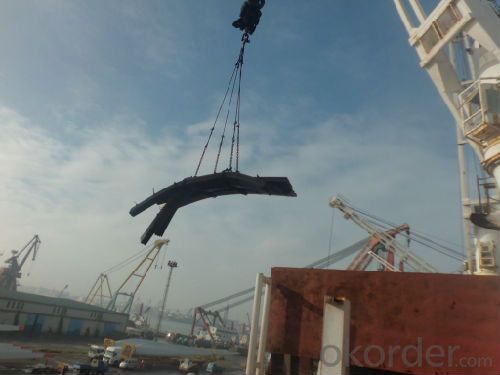

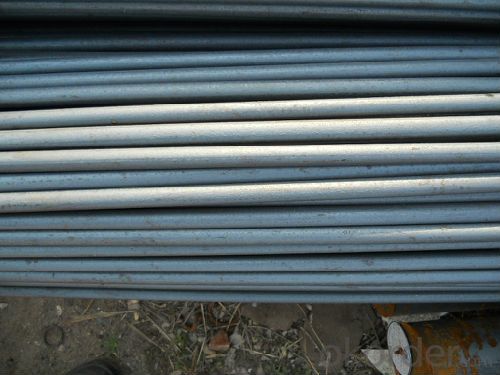
- Q: Are steel round bars available in different diameters?
- Indeed, one can find steel round bars in diverse diameters. The diameter options for steel round bars span a broad spectrum, commencing from diminutive sizes like 1/8 inch (3.175 mm) and extending to larger dimensions like 12 inches (304.8 mm) or even beyond. This assortment of diameters accommodates the needs of various sectors and enterprises, granting the freedom to select the ideal size to match specific undertakings or criteria.
- Q: Can steel round bars be used for valve stem applications?
- Steel round bars can indeed be utilized for valve stem applications. Their exceptional strength and durability make them a popular choice in numerous industrial settings. In valve stem applications, steel round bars are frequently employed to offer stability and structural support to the valve stem, thus guaranteeing seamless operation and enduring performance. Moreover, steel round bars can be effortlessly machined and fabricated to meet precise specifications, rendering them an adaptable option for valve stem applications.
- Q: Are steel round bars suitable for the production of hydraulic cylinders?
- Yes, steel round bars are suitable for the production of hydraulic cylinders. Steel is a material known for its strength, durability, and resistance to corrosion, making it an excellent choice for hydraulic applications. Steel round bars are often used in the construction of hydraulic cylinders due to their high tensile strength and ability to withstand heavy loads and pressure. Additionally, steel can be easily machined and welded, allowing for precise manufacturing and customization of hydraulic cylinders. Overall, steel round bars provide the necessary qualities and performance required for the production of hydraulic cylinders.
- Q: What are the different types of steel round bars used in the automotive steering systems?
- In automotive steering systems, there exists a range of steel round bars with distinctive properties and advantages. 1. Carbon Steel Round Bars: These round bars are extensively utilized in automotive steering systems due to their superior strength and durability. They are suitable for various steering components like tie rods and drag links. Additionally, carbon steel round bars are cost-effective and readily accessible, making them a popular choice in the automotive industry. 2. Alloy Steel Round Bars: By incorporating alloying elements such as chromium, nickel, and molybdenum into carbon steel, alloy steel round bars enhance their strength, hardness, and wear resistance. They are particularly useful in high-stress areas of the steering system, including steering shafts and steering knuckles, where additional strength is required. 3. Stainless Steel Round Bars: Stainless steel round bars are renowned for their exceptional resistance to corrosion, making them ideal for steering components exposed to harsh environments or moisture. Steering column shafts and tie rod ends frequently incorporate stainless steel round bars. 4. Tool Steel Round Bars: Steering system components that demand high hardness, wear resistance, and toughness often utilize tool steel round bars. These bars are commonly employed in the production of steering gears and other precision steering components. 5. High-Strength Low-Alloy (HSLA) Steel Round Bars: HSLA steel round bars, a type of alloy steel, offer a favorable balance between strength, toughness, and formability. Lightweight steering system components often employ HSLA steel round bars to reduce weight while maintaining structural integrity. Ultimately, the selection of steel round bars in automotive steering systems depends on factors such as the specific application, desired strength, durability, and corrosion resistance. Manufacturers carefully choose the appropriate steel type to ensure optimal performance and safety in steering systems.
- Q: Can steel round bars be recycled?
- Yes, steel round bars can be recycled. Steel is a highly recyclable material, and the recycling process involves melting the steel bars down to be used in the production of new steel products.
- Q: How are steel round bars made?
- Steel round bars are made through a process called hot rolling. It involves heating a large rectangular steel billet until it reaches a malleable temperature. The heated billet is then passed through a series of rolling stands, which progressively reduce its thickness and shape it into a round bar. The first step in the hot rolling process is heating the billet in a furnace at extremely high temperatures, typically around 1200 to 1300 degrees Celsius. This heat makes the steel more pliable and easier to shape. Once the billet is heated, it is fed into a rolling mill. The mill consists of a series of rollers that gradually reduce the thickness and elongate the billet. As the billet passes through each set of rollers, it is squeezed and stretched, gradually forming a round shape. The number of passes through the rolling mill depends on the desired final size and shape of the round bar. During the rolling process, the steel bar is also cooled to prevent overheating and ensure proper metallurgical properties. This can be done through a water spray or air cooling system. After the bar has been shaped and cooled, it is cut into desired lengths. The cut bars are then subjected to further processes such as straightening, surface treatment, and quality testing. These additional steps ensure that the steel round bars meet the required specifications and standards. Overall, the process of making steel round bars involves heating a steel billet, passing it through a series of rolling stands to shape it into a round bar, cooling it, and then cutting it into desired lengths. This process allows for the production of strong and durable round bars that find various applications in industries such as construction, manufacturing, and engineering.
- Q: What are the advantages of using case-hardening steel round bars?
- There are several advantages of using case-hardening steel round bars. Firstly, case-hardening steel offers excellent wear resistance, making it suitable for applications where the material is subjected to abrasion or friction. Secondly, it provides high core strength, ensuring the bar can withstand heavy loads and stresses. Additionally, case-hardening steel round bars have good machinability, allowing for easy shaping and forming. Lastly, the case-hardening process improves the surface hardness of the bar, enhancing its durability and extending its lifespan.
- Q: Can steel round bars be used for decorative purposes?
- Yes, steel round bars can be used for decorative purposes. They can be incorporated into various architectural and interior design projects to add a modern and industrial aesthetic. Steel round bars can be shaped, bent, and welded to create unique and eye-catching pieces such as furniture, sculptures, railings, and decorative accents. Their sleek and metallic appearance can complement different styles and design themes, making them a versatile choice for decorative purposes. Additionally, steel round bars are durable and long-lasting, ensuring that the decorative elements will withstand the test of time.
- Q: Can steel round bars be used for tooling applications?
- Tooling applications can indeed utilize steel round bars. Steel, being a highly versatile material, possesses exceptional strength, durability, and resistance to wear and tear. By machining, heat treating, and shaping round bars made of steel, one can create a wide range of tools, including punches, dies, drills, and lathe tools. The round shape of these bars facilitates effortless machining and shaping processes. Moreover, the performance of steel round bars in specific tooling applications can be further enhanced through surface treatments or coatings. All in all, due to their outstanding mechanical properties and adaptability, steel round bars find widespread application in tooling.
- Q: What are the advantages of using creep-resistant steel round bars?
- The advantages of using creep-resistant steel round bars include: 1. Enhanced strength and durability: Creep-resistant steel has high tensile strength and excellent resistance to deformation at elevated temperatures, making it suitable for applications in high-stress environments. 2. Increased safety: Creep-resistant steel round bars can withstand high temperatures without significant deformation, ensuring structural integrity and preventing failures in critical applications. 3. Extended service life: The resistance to creep deformation allows these round bars to maintain their shape and strength over an extended period, resulting in longer service life and reduced maintenance costs. 4. Versatile applications: Creep-resistant steel round bars are used in various industries, including power generation, oil and gas, petrochemical, and aerospace, due to their ability to withstand high temperatures and stress. 5. Cost-effectiveness: Although creep-resistant steel may have a higher initial cost compared to other materials, its extended service life, reduced maintenance requirements, and improved safety make it a cost-effective choice in the long run.
Send your message to us
Hot Rolled Steel Round Bar SGS Certificate Lower Price SAE 1018
- Loading Port:
- Tianjin
- Payment Terms:
- TT or LC
- Min Order Qty:
- 30 m.t.
- Supply Capability:
- 27000 m.t./month
OKorder Service Pledge
OKorder Financial Service
Similar products
Hot products
Hot Searches
Related keywords
